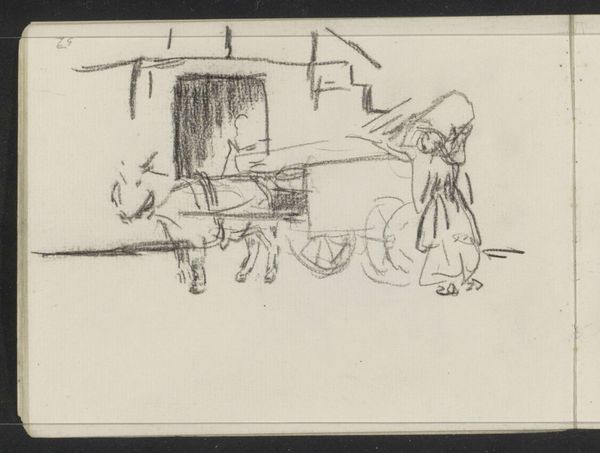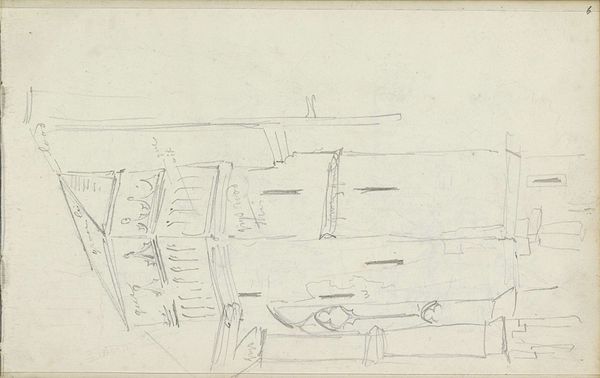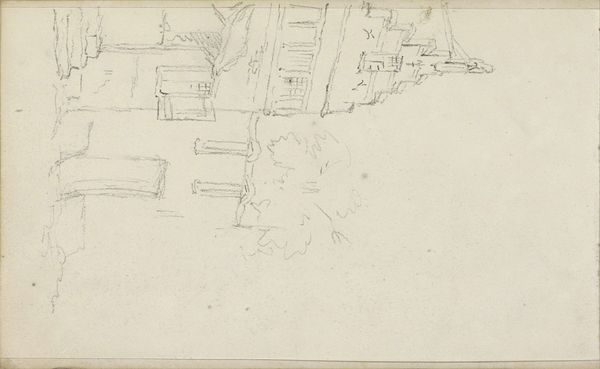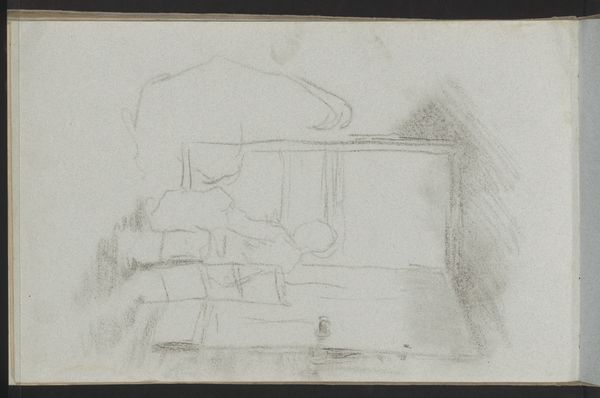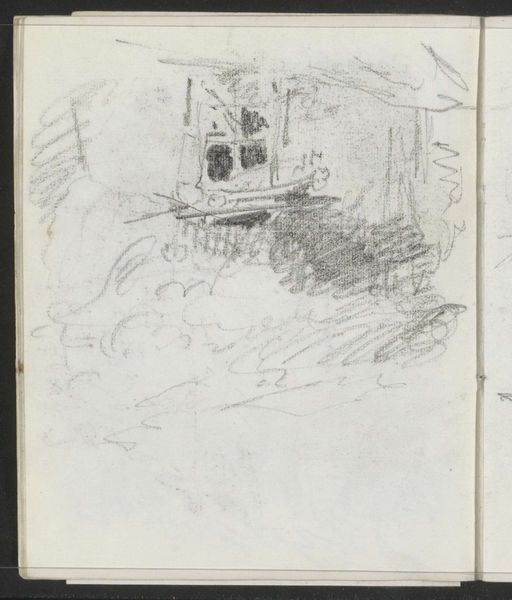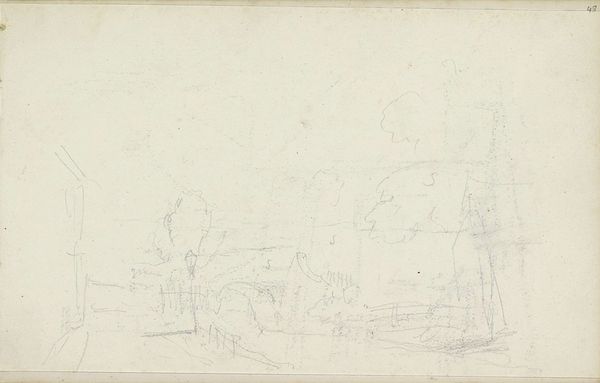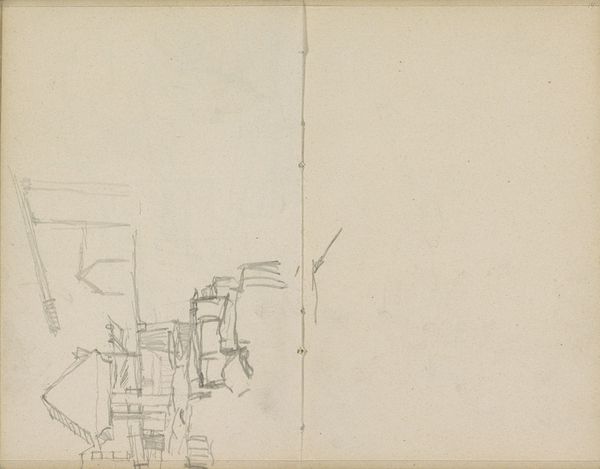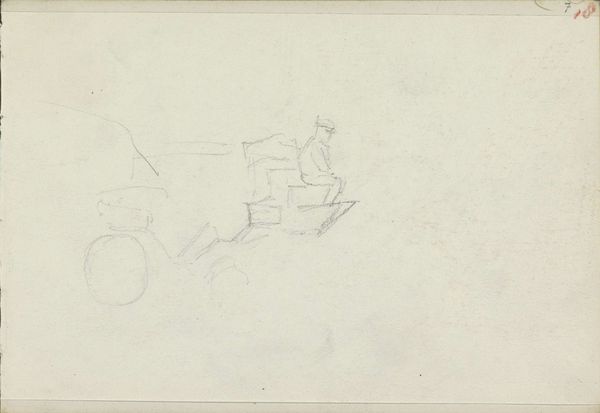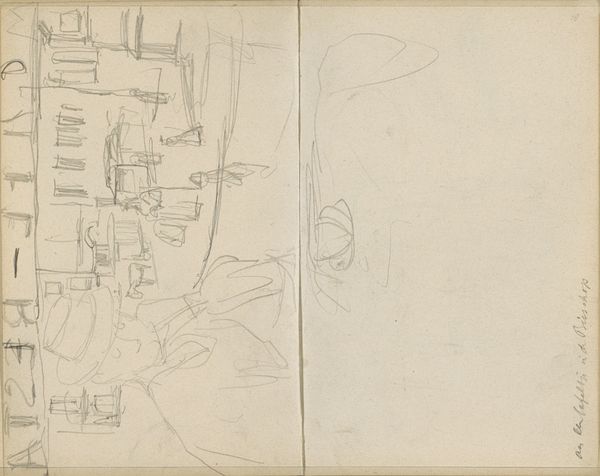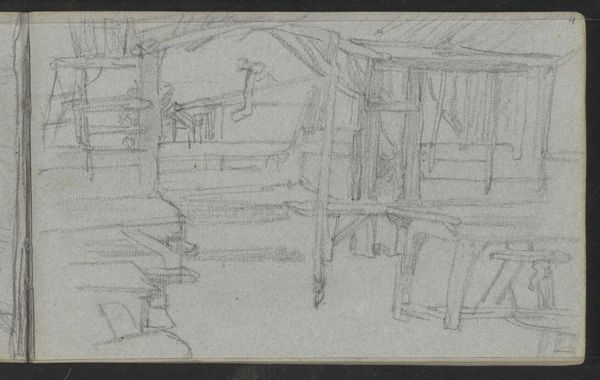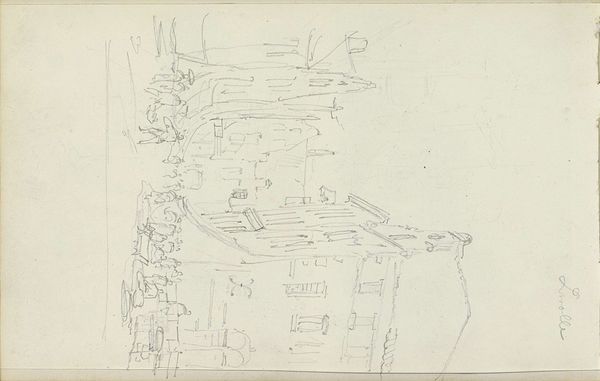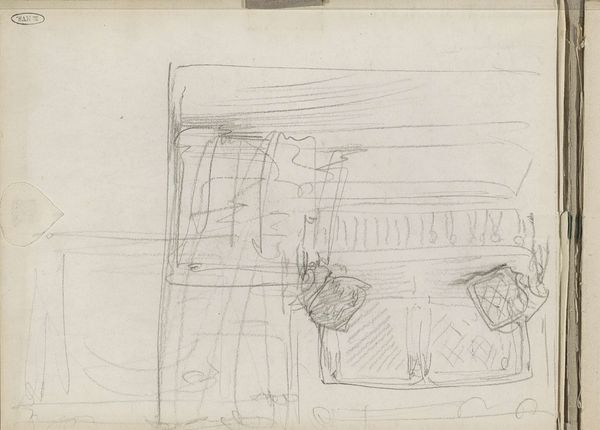
Copyright: Rijks Museum: Open Domain
Curator: This drawing, titled "Abklatsch van de krijttekening op blad 7 verso," roughly translates to "Impression of a chalk drawing on page 7 verso". Isaac Israels likely made this sketch sometime between 1886 and 1934. Editor: My first impression is of something ephemeral, almost ghostly. The delicate pencil lines barely register on the page, giving it a sense of transience, as if the scene is about to vanish. Curator: Israels was known for his impressionistic style, capturing fleeting moments of daily life. Sketchbooks offered artists private spaces for such experimentation, unbound by the demands of public exhibitions or wealthy patrons. Editor: Exactly! Look at the almost casual handling of the graphite, the rough marks building up the form. This feels like a study, an immediate response to a visual stimulus, perhaps documenting the materiality of urban existence? How might the availability, cost and manufacturing process of pencils and sketchbooks influence how someone like Israels approached making such art? Curator: Well, mass production of sketchbooks in the late 19th century made them easily accessible. Also, it allowed artists to democratize artistic practice and circulate imagery through exhibitions of sketches. We can view these as artifacts of social life in flux, or documentation. Editor: The labor involved, from the graphite mining to paper production, all ends up manifesting in this light drawing. There's also a tactile quality even from afar. You can imagine Israels, working swiftly, capturing the mood or the light he felt at the moment, maybe as a record for larger projects. Curator: Considering Israels' social circles, I would bet that he captured his bourgeois life. Editor: Even just a brief examination highlights that drawing serves as an archive, not just of an image but of an artist’s material practices. Curator: I agree. I think we've been able to offer insights on the sketchbook not only as a record of artistic processes, but as historical documents in themselves. Editor: Precisely. Paying attention to this type of production gives access to artmaking usually outside formal study, the foundation from which his grander artworks emerge.
Comments
No comments
Be the first to comment and join the conversation on the ultimate creative platform.
